Assala Pure Art: 'The Natives' in Palestinian Tarweedeh Style
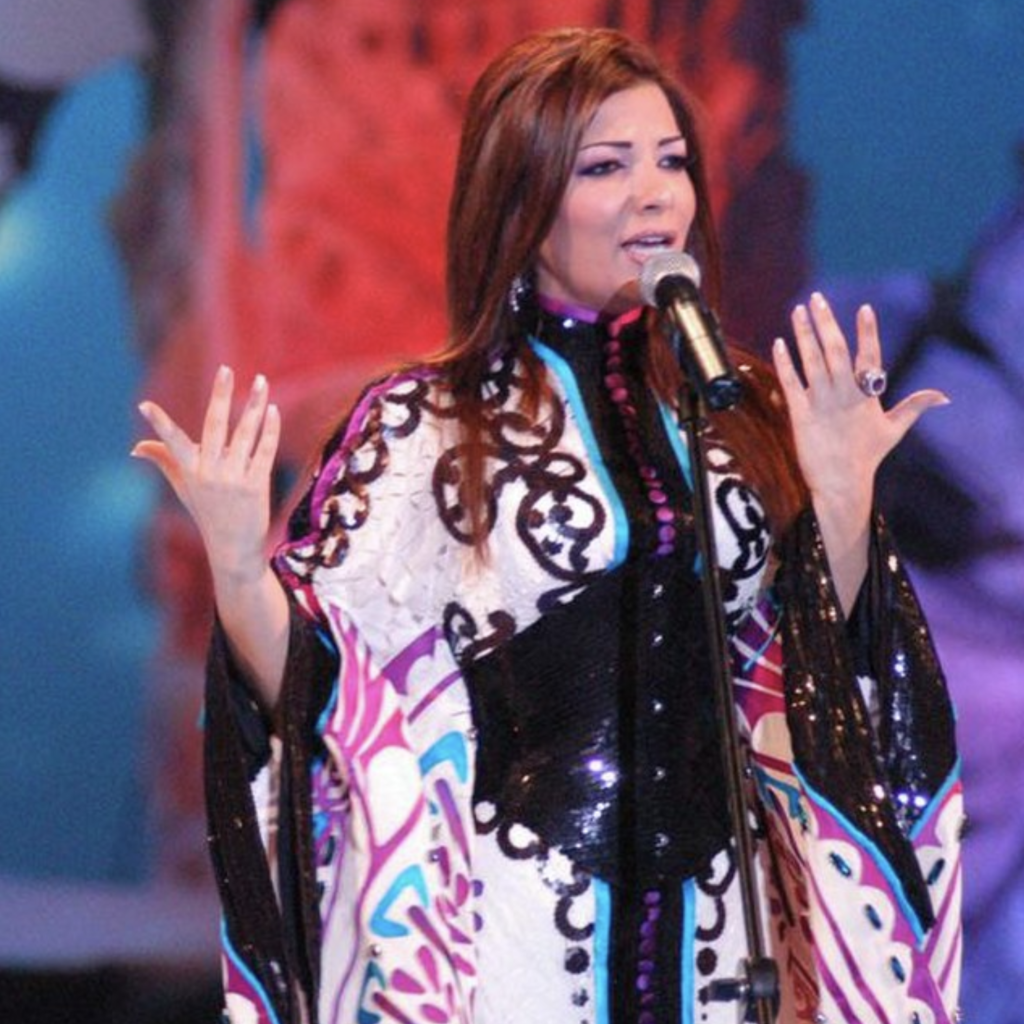
By: Yara Marei / Arab America Contributing Writer
“Landowners” or “The Natives” is one of the most recently released songs that are getting trendy now, performed by Assala Nasri, ft. Acapella Masreya Band, and Fares Katrya. The latest music video, presented in the traditional Tarweedeh style, is a poignant and symbol-laden tribute to the native landowners and their enduring struggle. The song, deeply rooted in cultural and historical symbolism, aims to evoke pride, love for the land, and solidarity with the people enduring the current war, not only about the meaningful lyrics but also about the incredible symbolism of the creative video clip.
Palestinian women developed Tarweedeh in the late nineteenth century. It is a form of pronouncing Arabic in the Palestinian dialect and adding “lalalala” in the middle of the word to make it harder and impossible for British colonizers to understand what they are talking about, although these British settlers could be learning Arabic! So this Tarweedeh still exists in culture and in the traditional songs sung at weddings and parties, usually by female artists. The current situation of Israeli settlements in the whole land of Palestine and the Israeli war on Gaza influenced many Arab artists to sing using the traditional Palestinian Tarweedeh as a form of cultural revival and to support the resistance forces of the landowners.
A Journey Through Symbols and History
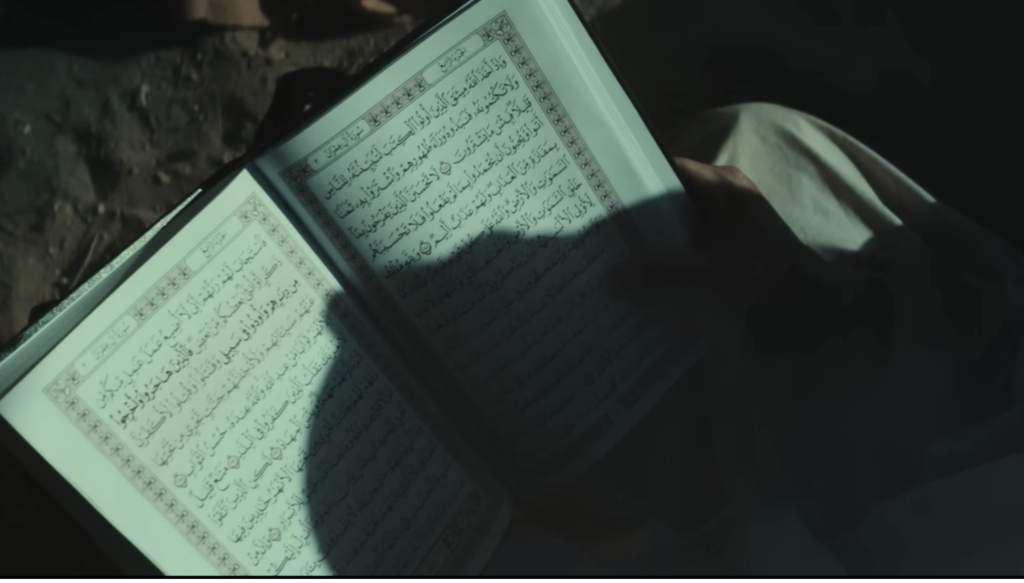
The video clip begins with a haunting scene of burned olive tree leaves and the shadow of six men in devil form, representing the occupiers. This imagery sets the stage for a narrative which intertwines historical and contemporary struggles. Following this, a group of women recite the Qur’an and praise Allah, with a particular verse from Surat Al-Omran: “So those who emigrated and were driven out of their homes, and suffered harm in My Cause, and who fought and were killed, verily, I will remit from them their evil deeds and admit them into heavens under which rivers flow; a reward from Allah, and with Allah is the best of rewards” (3:195), highlighting the suffering of the Palestinian people.
Iconic Symbolism
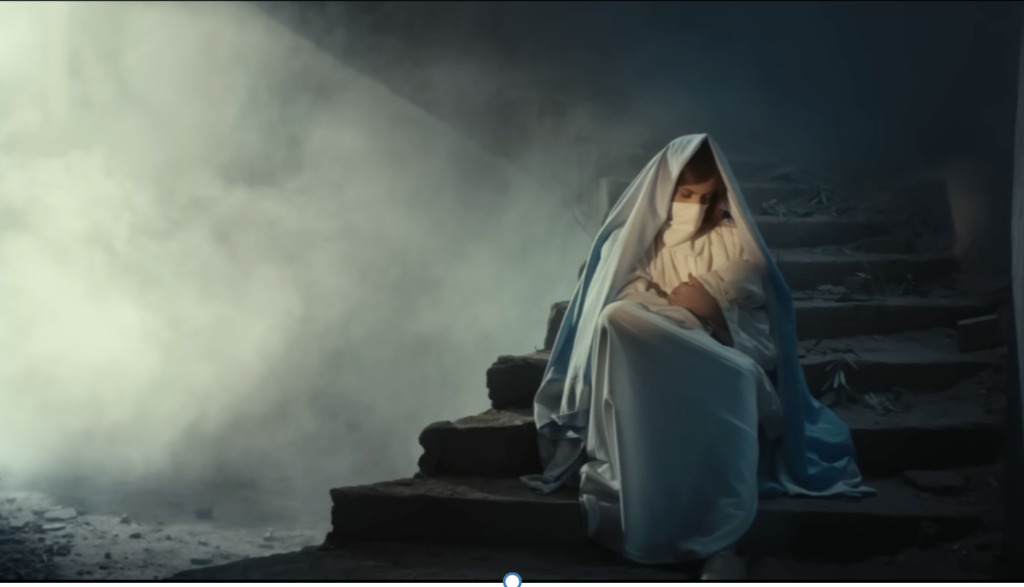
A crying child in the video represents the Virgin Mary and her son Jesus, symbolizing her fleeing destruction to protect her child and highlighting the historical fact that Jesus was born Palestinian in Bethlehem. This powerful image links historical and present-day struggles against oppression, especially when the setting is full of war destruction around her while the music is playing and the Palestinian Tarweedeh is performed in the background music of the video clip full of the letter “L” that you can repeatedly hear when you listen to the song.
The scene then shifts to jailed people holding each other so tightly that they are tied to the last moment. which reflects “The Last Prayer of Jerome” (1883), depicting Christians in Rome awaiting their fate, to be fed to lions and tigers. This painting serves as a metaphor for resilience and faith in the face of imminent danger.
The devils arrived by ships on The Natives’ land
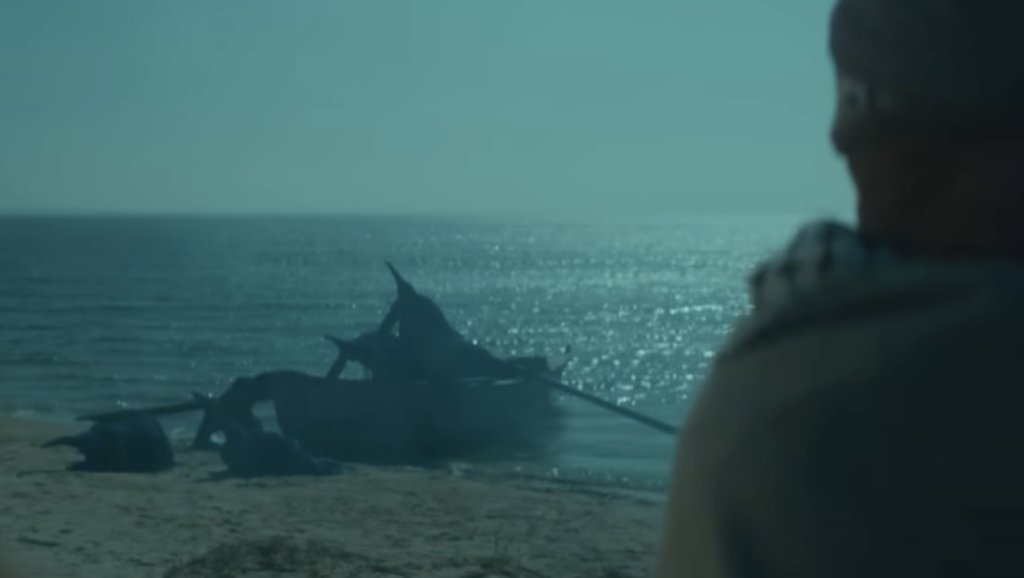
The song takes us in a flashback to the fact that these six devils arrived by sea using ships, and once they arrived, they just laid down on the beach because they were exhausted. and that means that they are refugees who fled from discrimination in their home countries in Europe and then immigrated illegally to Palestine, crossing the Mediterranean Sea. At this point in the flashback, Assala starts singing “Reet elmarkeeb ele akhado w ma raddoh yebla be kasro wbnar aa ghaddo,” which means that I wish these ships were broken before they were built to carry devils to our country. and that reflects that immigration was illegal because, between Europe and Palestine, there is a full history of flights from Lod airport in Palestine, which is now occupied; they changed the name to Bin Ghoroin airport, leaving Palestine without a functioning airport.
The Spread of Devils and the Power of Youth
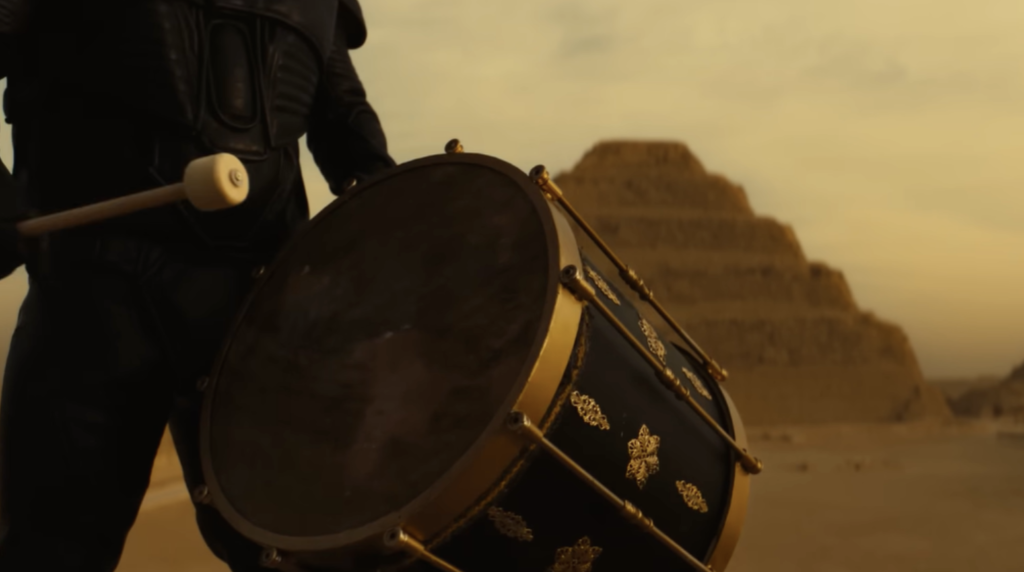
The narrative continues with devils spreading across a burnt land, juxtaposed with a young girl standing bravely alone in front of them. and she was trying to jump in the landowners’ dance, but she failed. At this point, the role of Egypt is highlighted through a dance in the temple of the Genoese in Saqqara, symbolizing Egypt’s historical support for Palestine and showing the pyramids and Egyptian warriors in the background.
Handalah and the Dance of The Natives

The next scene is underground, where we see Handala running in the tunnels and dancing the natives dance and running to help this girl standing alone where the devils are spreading in the land of natives.
Handala is an iconic and poignant character created by Palestinian cartoonist Naji Al-Ali and is usually known as having some spikes over his head, and that is what was obvious in the video clip to prove that this soldier is Handalah, where the Handalah character is shown to be a ten-year-old boy, while in the song they showed that Handalah is ground up to be a strong warrior defending his land. His connection to the young girl, who attempts to dance but struggles, symbolizes the transfer of heritage and resistance from one generation to the next. In addition to showing a young man holding a house key, he falls in the fog, representing those displaced from their homes. While Assala is singing, “I wish that all money would be transformed into vehicles to carry our youth far away from the war,” she says “transformed,” not “I wish to purchase vehicles or flights,” and that means that money is sacrificed now for the sake of safety and not used to purchase things like in normal situations.
The land delivers its sons out of her womb to fight devils
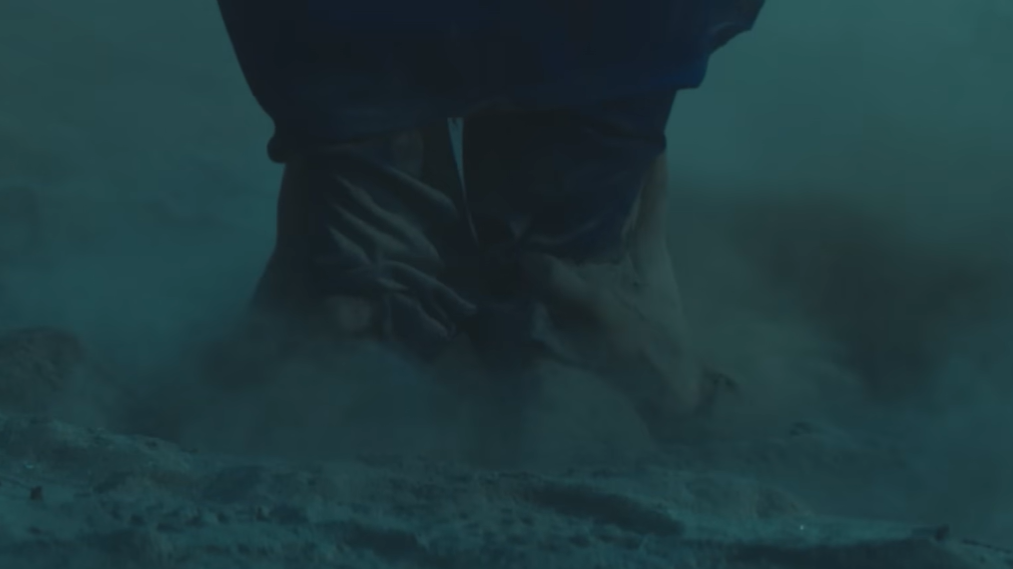
The video incorporates “The Nightmares of War” by Spanish artist Francisco Goya, evoking the horrors of the Napoleonic wars and drawing parallels to current conflicts. The climax is when the Egyptian warrior moves to support Handalah as the devils get close to the young girl. Montu, the God of War, breaks a statue of the famous Samaritan statues, which resembles breaking the zionist claims of occupying Palestine. and now all parties are starting to act against the devils invading the native land. At this point, we see Handalah and his people, the landowners, going up from the tunnels as seeds growing up from the land, as they are the sons of the land that the land sent to deliver them now at this specific moment to defend it. While the earth is moving beneath them, the devil’s feet are pushing them down inside the earth, which means they are buried.
Triumph and Hope
After Handalah grows up into a resistance soldier, pulling the devils underground, while another native rises to protect the child. Hope is restored, and the young girl finally learns to dance the dance of her ancestors, the dance of the natives, signifying the unbroken spirit and resilience of the Palestinian people
Assala Nasri’s video is not just a song but a powerful narrative that blends historical events, cultural symbols, and contemporary struggles into a compelling call for pride, resistance, and unity. It is a reminder of the enduring spirit of the landowners and their unwavering love for their homeland.
See the blog here!








